Are you a creative soul yearning to turn your passion for art into a fulfilling career? In today’s diverse and dynamic world, the opportunities for artists have expanded far beyond the traditional paths of painting and sculpting. From the digital realm to the performing arts, there’s a thrilling art career waiting for you to unleash your creativity and thrive.
In this article, we’ll explore 20 exciting art careers that will inspire you to pursue your artistic dreams. Whether you’re a fresh graduate or a seasoned professional looking for a change, these careers offer a chance to express yourself, make a difference, and build a successful future in the arts.
What You’ll Learn
- Discover a wide range of art careers spanning traditional and digital mediums
- Understand the key responsibilities and skills required for each career
- Explore niche art careers that combine creativity with other disciplines
- Learn about the business side of the art world and related career opportunities
- Gain insights into preparing for a successful art career
Get ready to embark on a journey through the fascinating world of art careers. By the end of this article, you’ll have a clearer picture of the possibilities that await you and the steps you can take to turn your passion into a thriving profession.
1. Fine Artist
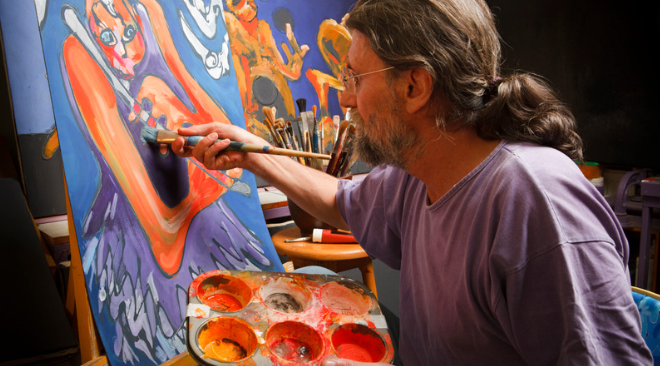
As a fine artist, you’ll have the opportunity to express your creativity through various mediums such as painting, sculpting, and printmaking. Fine artists often work independently, creating pieces for exhibitions, galleries, or commissioned projects. To succeed in this field, you’ll need to develop your unique style, master your chosen mediums, and build a strong portfolio showcasing your best work.
Painting
- Experiment with different painting techniques and styles
- Explore various surfaces and materials, from canvas to wood panels
- Develop your color theory and composition skills
Sculpting
- Work with a range of materials, including clay, metal, and stone
- Learn about different sculpting techniques, such as carving and modeling
- Consider specializing in a particular style or subject matter
Printmaking
- Master printmaking techniques like etching, lithography, and screen printing
- Experiment with different papers and inks to create unique textures and effects
- Collaborate with other artists or printmaking studios to expand your skills
2. Graphic Designer
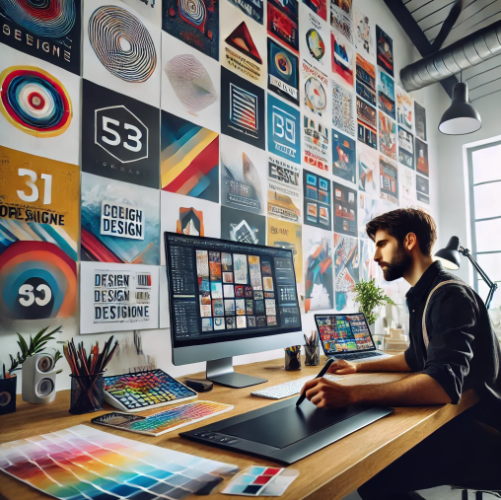
Graphic designers play a crucial role in visual communication, creating engaging and informative designs for various industries. As a graphic designer, you’ll work with clients to develop branding, marketing materials, and digital content that effectively conveys their message and captivates their target audience.
Branding and Identity Design
- Create logos, color palettes, and typography that reflect a brand’s personality
- Develop comprehensive brand guidelines to ensure consistency across all media
- Collaborate with marketing teams to create cohesive brand experiences
Print and Digital Media Design
- Design layouts for brochures, flyers, and other print materials
- Create engaging social media graphics and web banners
- Optimize designs for various screen sizes and devices
Packaging Design
- Develop eye-catching packaging designs that stand out on store shelves
- Consider the functional aspects of packaging, such as material choice and sustainability
- Collaborate with product development teams to ensure packaging aligns with the product’s identity
3. Illustrator

Illustrators bring stories and concepts to life through their artwork, creating visuals for books, magazines, advertisements, and more. As an illustrator, you’ll have the chance to work on a wide range of projects, from children’s book illustrations to editorial pieces that accompany articles.
Book Illustrations
- Collaborate with authors and publishers to create engaging visuals that complement the story
- Develop a consistent style and character designs throughout the book
- Consider the target audience and adapt your illustrations accordingly
Editorial Illustrations
- Create illustrations that enhance and clarify the content of articles and essays
- Work with art directors and editors to ensure your illustrations align with the publication’s style and tone
- Meet tight deadlines and adapt to fast-paced editorial environments
Advertising Illustrations
- Develop eye-catching illustrations for print and digital ad campaigns
- Collaborate with creative teams to ensure your illustrations effectively communicate the desired message
- Adapt your style to suit different brands and target audiences
4. Video Game Artist

As a video game artist, you’ll play a crucial role in creating the visually stunning and immersive worlds that gamers love to explore. From designing characters to crafting intricate environments, your work will bring the game’s vision to life and keep players engaged for hours on end.
Character Design
- Create concept art and final designs for game characters,
- including protagonists, antagonists, and NPCs
- Develop character sheets that showcase different poses, expressions, and outfits
- Collaborate with game designers and writers to ensure characters align with the game’s story and mechanics
Environment Design
- Craft the game’s world, including landscapes, buildings, and interiors
- Create mood boards and concept art to establish the visual style and atmosphere
- Work with level designers to ensure environments are both visually appealing and functional for gameplay
User Interface Design
- Design intuitive and visually engaging menus, icons, and HUDs (heads-up displays)
- Ensure the UI elements seamlessly integrate with the game’s overall aesthetic
- Collaborate with UX designers to create user-friendly interfaces that enhance the gaming experience
5. Animator

Animators breathe life into characters and objects, creating the illusion of movement that captivates audiences across various media, from films and television shows to video games and web content. As an animator, you’ll have the opportunity to work in different styles and techniques, bringing your unique vision to each project.
2D Animation
- Master traditional hand-drawn animation techniques using digital tools like Adobe Animate or Toon Boom Harmony
- Create character rigs and animate scenes based on storyboards and director’s notes
- Collaborate with other animators to ensure consistency in style and timing
3D Animation
- Learn 3D animation software such as Autodesk Maya or Blender
- Develop skills in modeling, rigging, and animating 3D characters and objects
- Work with lighting and rendering techniques to create realistic or stylized visuals
Stop-Motion Animation
- Experiment with various materials, such as clay, paper, or puppets, to create unique stop-motion animations
- Develop patience and attention to detail, as stop-motion requires meticulous planning and execution
- Collaborate with set designers and fabricators to create miniature worlds for your animations
6. Visual Effects Artist

Visual effects (VFX) artists are the magicians of the digital world, creating stunning and believable visuals that blend seamlessly with live-action footage. As a VFX artist, you’ll work on a wide range of projects, from blockbuster films to television commercials, using your technical skills and artistic eye to create mind-bending effects.
Compositing
- Combine multiple layers of live-action footage and computer-generated elements to create cohesive visuals
- Master compositing software like Nuke or After Effects
- Collaborate with other VFX artists and supervisors to ensure seamless integration of effects
Matte Painting
- Create digital paintings that serve as backgrounds or environments for live-action scenes
- Develop skills in perspective, lighting, and texture to create realistic and immersive visuals
- Work closely with compositors to ensure matte paintings blend seamlessly with live-action elements
Motion Graphics
- Design and animate engaging motion graphics for film titles, television shows, and commercials
- Master motion graphics software like Adobe After Effects or Cinema 4D
- Collaborate with directors and producers to create visuals that align with the project’s creative vision
7. Set Designer
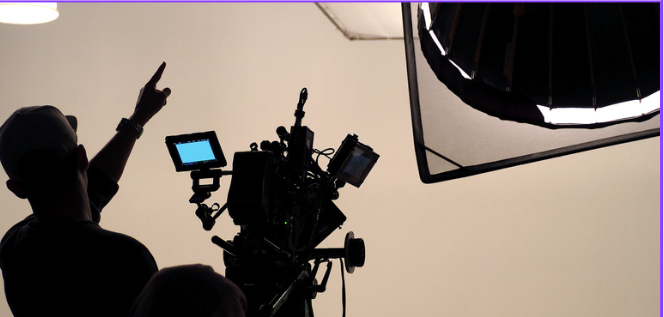
As a set designer, you’ll be responsible for creating the physical environment in which a performance takes place, whether it’s a theater production, film, or television show. Your designs will help transport the audience into the world of the story and create an immersive experience for the actors.
Theater Set Design
- Read and analyze scripts to understand the story’s setting and mood
- Create sketches, models, and 3D renderings of set designs
- Collaborate with directors, lighting designers, and stage crews to bring your vision to life
Film Set Design
- Research historical periods, architectural styles, and cultural elements to create authentic set designs
- Work closely with the art department to ensure sets align with the film’s overall aesthetic
- Manage budgets and timelines to ensure sets are constructed efficiently and cost-effectively
Television Set Design
- Design sets for a variety of television genres, from sitcoms to talk shows
- Create modular and adaptable sets that can be easily modified for different scenes and episodes
- Collaborate with directors and producers to ensure sets meet the needs of the production
8. Costume Designer
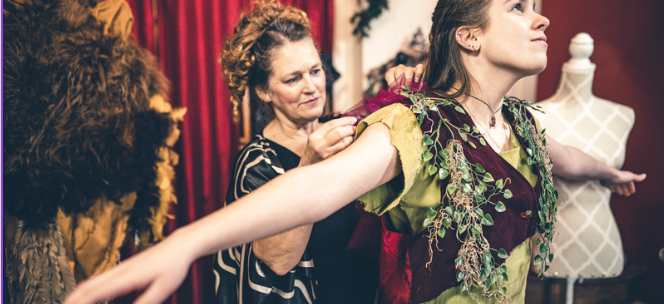
Costume designers are storytellers who use clothing and accessories to bring characters to life and convey their personalities, social status, and emotional states. As a costume designer, you’ll research historical periods, develop concepts, and work closely with actors to create costumes that authentically represent the characters they portray.
Historical Costume Design
- Conduct extensive research on historical fashion, fabrics, and construction techniques
- Create accurate and detailed costume sketches and renderings
- Source and oversee the creation of historically accurate costumes, from undergarments to accessories
Contemporary Costume Design
- Analyze scripts and collaborate with directors to understand characters’ personalities and arcs
- Develop costume concepts that reflect the characters’ journeys and the story’s themes
- Work with actors during fittings to ensure costumes are comfortable and allow for ease of movement
Costume Crafting and Construction
- Master various sewing, pattern-making, and fabric manipulation techniques
- Collaborate with costume makers and seamstresses to bring your designs to life
- Develop skills in dyeing, distressing, and aging fabrics to create unique and realistic costumes
9. Makeup Artist
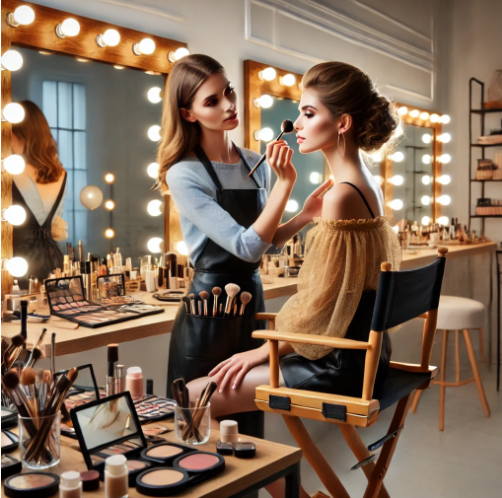
Makeup artists are the unsung heroes of the performing arts, using their skills to transform actors into their characters and bring creatures and special effects to life. As a makeup artist, you’ll work closely with actors, directors, and other designers to create looks that enhance the story and captivate the audience.
Theater Makeup
- Design and apply stage makeup that enhances actors’ features and reads well under theatrical lighting
- Create age makeup, character makeup, and special effects to transform actors into their roles
- Work quickly and efficiently during live performances to ensure makeup stays fresh and flawless
Film and Television Makeup
- Collaborate with directors, cinematographers, and lighting designers to create makeup looks that work well on camera
- Develop continuity charts and maintain consistent makeup looks throughout the production
- Stay up-to-date with the latest makeup products, techniques, and trends
Special Effects Makeup
- Master the art of creating realistic wounds, scars, and other special effects using prosthetics and makeup
- Collaborate with VFX artists to ensure practical effects seamlessly integrate with digital effects
- Continually hone your skills and stay current with the latest materials and techniques in the field
10. Comic Book Artist
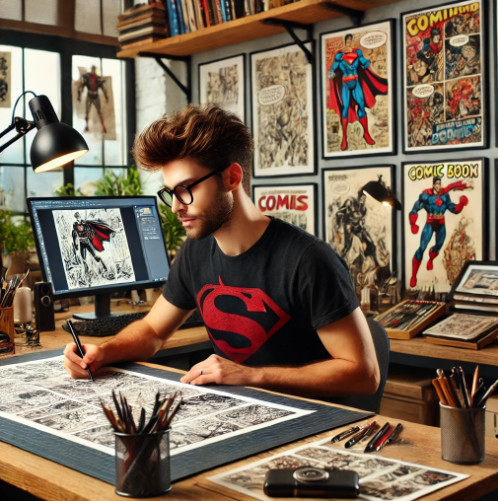
As a comic book artist, you’ll have the chance to bring characters and stories to life through the power of sequential art. You’ll work closely with writers to create visually compelling narratives that engage and entertain readers.
Sequential Art Storytelling
- Master the art of visual storytelling, using panels, gutters, and page layouts to guide the reader’s eye
- Develop skills in pacing, composition, and perspective to create dynamic and engaging pages
- Collaborate with writers to ensure the artwork effectively conveys the story’s emotions and themes
Character Design and Development
- Create memorable and visually distinct characters that readers can connect with
- Develop character turnarounds and expression sheets to ensure consistency throughout the comic
- Work with writers to refine character designs and align them with the story’s tone and style
Inking and Coloring
- Master inking techniques to add depth, texture, and clarity to your pencil artwork
- Develop skills in digital coloring using software like Adobe Photoshop or Clip Studio Paint
- Experiment with different coloring styles and palettes to create unique and atmospheric visuals
11. Tattoo Artist
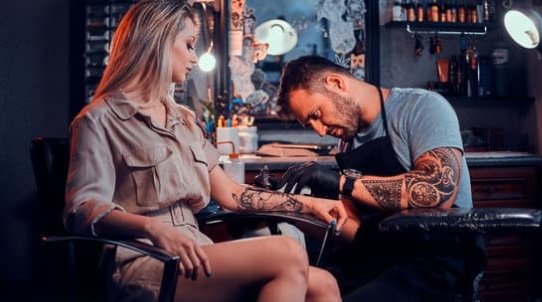
Tattoo artists have the unique opportunity to create art that people carry with them for a lifetime. As a tattoo artist, you’ll work closely with clients to design and execute custom tattoos that hold personal meaning and aesthetic appeal.
Custom Tattoo Design
- Consult with clients to understand their vision and create custom tattoo designs that meet their expectations
- Develop skills in various tattoo styles, from traditional to realistic, to cater to a wide range of client preferences
- Use digital tools like Procreate or Adobe Illustrator to refine and preview tattoo designs before inking
Tattoo Techniques and Styles
- Master the use of tattoo machines, needles, and inks to create clean, precise, and vibrant tattoos
- Continually hone your skills in linework, shading, and color packing to create tattoos that stand the test of time
- Stay up-to-date with the latest trends and techniques in the tattoo industry
Health and Safety Practices
- Maintain a clean, sterile, and professional work environment to ensure client safety and comfort
- Follow proper sanitation and hygiene protocols, including the use of single-use needles and disposable gloves
- Educate clients on proper tattoo aftercare to promote healing and maintain the quality of the tattoo
12. Art Therapist
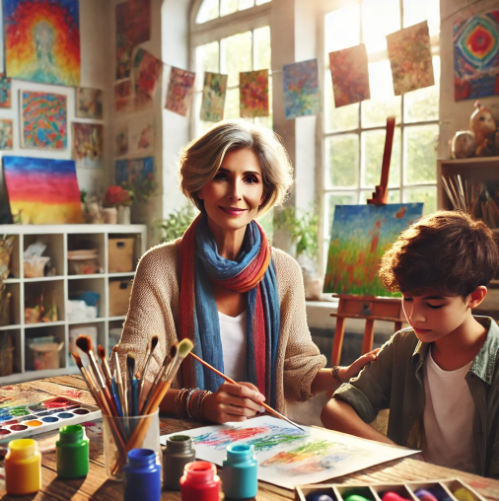
Art therapists use the creative process to help individuals explore emotions, develop self-awareness, and cope with life’s challenges. As an art therapist, you’ll combine your passion for art with your
desire to help others, using art-making as a tool for healing and personal growth.
Using Art to Promote Mental Health
- Develop treatment plans that incorporate art-making activities to address clients’ specific needs and goals
- Guide clients through the creative process, encouraging self-expression and reflection
- Help clients process and make sense of their artwork, facilitating insight and emotional growth
Working with Diverse Populations
- Adapt your approach to meet the needs of various age groups, from children to older adults
- Work with clients facing a range of mental health concerns, including anxiety, depression, and trauma
- Collaborate with other healthcare professionals to provide comprehensive care for clients
Combining Art and Psychology Principles
- Apply theories and techniques from psychology, such as cognitive-behavioral therapy and mindfulness, to your art therapy practice
- Continually expand your knowledge of art materials and techniques to offer clients a wide range of creative experiences
- Engage in ongoing professional development and self-reflection to enhance your skills and maintain ethical standards
13. Art Gallery Owner/Assistant
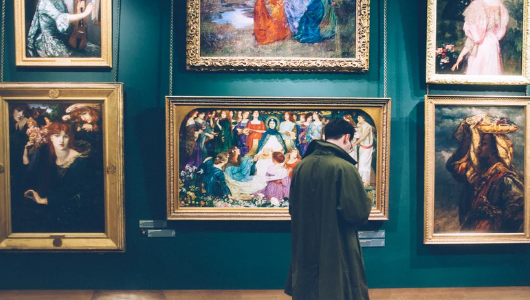
As an art gallery owner or assistant, you’ll be at the forefront of discovering, promoting, and selling the work of both established and emerging artists. You’ll need a keen eye for talent, strong business acumen, and excellent interpersonal skills to succeed in this fast-paced and competitive industry.
Curating Exhibitions
- Develop a unique gallery vision and aesthetic to stand out in the art market
- Scout and select artists whose work aligns with your gallery’s mission and style
- Plan and organize exhibitions that showcase artists’ work in a compelling and cohesive manner
Artist Representation and Promotion
- Build relationships with artists and serve as a liaison between them and potential buyers or collectors
- Promote artists through various channels, including social media, art fairs, and press releases
- Negotiate contracts and sales on behalf of the artists you represent
Art Sales and Marketing
- Develop a deep understanding of the art market and stay current with trends and prices
- Cultivate relationships with collectors, curators, and other art world professionals to expand your gallery’s reach
- Implement effective marketing strategies to attract buyers and generate sales
14. Art Critic
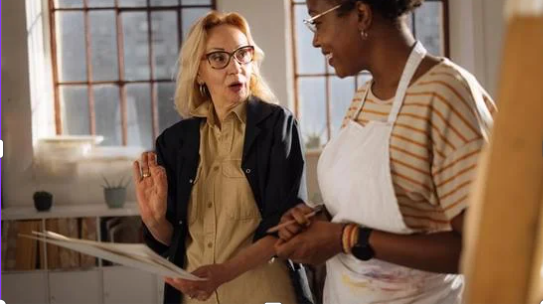
Art critics play a vital role in shaping public opinion and discourse around art. As an art critic, you’ll use your knowledge of art history, theory, and contemporary practices to analyze and interpret artworks, offering insights that help audiences engage with and appreciate art on a deeper level.
Analyzing and Interpreting Art
- Develop a deep understanding of various art forms, styles, and movements
- Examine artworks in their historical, cultural, and social contexts to uncover layers of meaning
- Use critical thinking and analytical skills to formulate well-reasoned and persuasive arguments about art
Writing Reviews and Essays
- Craft engaging and informative reviews of exhibitions, performances, and other art events
- Write in-depth essays exploring themes, trends, and issues in the art world
- Adapt your writing style to suit different audiences and publications, from academic journals to mainstream media outlets
Contributing to Art Publications
- Pitch article ideas to art magazines, newspapers, and online platforms
- Collaborate with editors to refine your writing and meet publication standards
- Build a strong portfolio of published work to establish yourself as a respected voice in the art world
15. Art Teacher

Art teachers have the rewarding opportunity to inspire and nurture the next generation of artists. As an art teacher, you’ll share your knowledge and passion for art with students of various ages and skill levels, helping them develop their creative abilities and appreciate the value of art in their lives.
Teaching Various Art Mediums
- Develop lesson plans that introduce students to a wide range of art mediums, from drawing and painting to sculpture and digital art
- Demonstrate techniques and provide guidance to help students master new skills
- Encourage experimentation and risk-taking to foster students’ creativity and self-expression
Developing Curricula and Lesson Plans
- Create engaging and age-appropriate curricula that align with educational standards and learning objectives
- Incorporate art history, theory, and criticism into your lessons to provide a well-rounded art education
- Adapt your teaching methods to accommodate different learning styles and abilities
Encouraging Creativity in Students
- Create a supportive and inclusive classroom environment that values diversity and individual expression
- Provide constructive feedback and praise to help students grow and develop their artistic skills
- Organize exhibitions, competitions, and other opportunities for students to showcase their work and gain recognition
16. Graffiti Artist
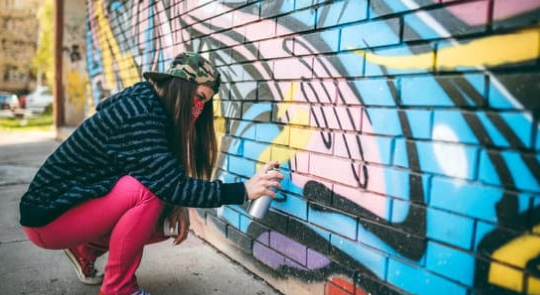
Graffiti artists use their creativity and skill to transform urban landscapes into vibrant works of art. As a graffiti artist, you
‘ll use spray paint, stencils, and other tools to create bold, eye-catching designs on walls, buildings, and other surfaces.
Developing Your Style
- Experiment with different lettering styles, characters, and imagery to create a unique visual identity
- Study the work of other graffiti artists to draw inspiration and refine your techniques
- Practice sketching and refining your designs before executing them on a larger scale
Mastering Spray Paint Techniques
- Learn how to control the pressure, distance, and angle of your spray paint can to achieve various effects
- Experiment with different nozzles and caps to create fine lines, gradients, and textures
- Develop your skills in layering colors, creating depth, and adding highlights and shadows
Navigating the Legal Landscape
- Understand the legal risks associated with graffiti and always seek permission before painting on private property
- Collaborate with property owners, businesses, and community organizations to create commissioned murals and installations
- Participate in legal graffiti events and festivals to showcase your work and connect with other artists
17. Mural Artist
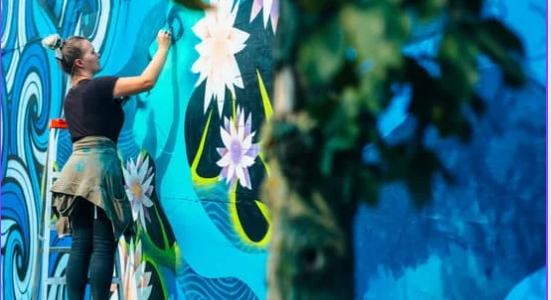
Mural artists create large-scale paintings on walls, ceilings, and other surfaces, often in public spaces or commercial settings. As a mural artist, you’ll use your artistic vision and technical skills to transform blank spaces into stunning visual experiences.
Developing Concepts and Designs
- Work closely with clients, architects, and community members to understand their vision and goals for the mural
- Create detailed sketches, color studies, and scale models to present your ideas and gather feedback
- Adapt your designs to suit the specific dimensions, lighting, and viewing angles of the mural site
Executing Large-Scale Paintings
- Master various painting techniques, including brushwork, rolling, and spray painting, to create smooth, even coverage
- Develop skills in scaling up your designs and maintaining proportions and perspective on a large surface
- Collaborate with assistants and volunteers to complete the mural efficiently and within budget
Engaging with the Community
- Involve local residents, students, and community groups in the mural-making process to foster a sense of ownership and pride
- Incorporate elements of local history, culture, and identity into your mural designs to create meaningful connections
- Use your murals as a platform to raise awareness about social issues, promote positive change, and beautify urban environments
18. Food Artist

Food artists use their culinary skills and artistic vision to create visually stunning and delicious edible masterpieces. As a food artist, you’ll combine your knowledge of flavor, texture, and presentation to craft unique and memorable dining experiences.
Exploring Culinary Techniques
- Master a wide range of cooking and baking techniques, from classic to avant-garde
- Experiment with different ingredients, flavors, and textures to create innovative flavor combinations
- Stay up-to-date with the latest food trends, dietary restrictions, and sustainability practices
Designing Visually Stunning Dishes
- Develop an eye for composition, color, and balance when plating and presenting your dishes
- Use a variety of tools, molds, and techniques to create intricate and precise designs
- Incorporate elements of art and design, such as symmetry, contrast, and negative space, into your food presentations
Collaborating with Clients and Venues
- Work closely with event planners, chefs, and clients to develop custom menus and presentations that align with their vision and budget
- Adapt your designs to suit the specific needs and constraints of different venues, from intimate dinner parties to large-scale events
- Build a strong portfolio of your work and cultivate relationships with industry professionals to grow your business
19. Fine Art Photographer

Fine art photographers use their cameras to capture and create images that express their unique artistic vision. As a fine art photographer, you’ll explore various subjects, techniques, and styles to create photographs that evoke emotion, tell stories, and challenge perceptions.
Developing Your Artistic Vision
- Experiment with different genres, such as landscape, portrait, still life, and abstract photography, to find your niche
- Study the work of master photographers and draw inspiration from other art forms to refine your aesthetic
- Develop a cohesive body of work that reflects your personal style, themes, and narrative
Mastering Technical Skills
- Gain a deep understanding of camera settings, lighting, and composition to control the look and feel of your images
- Experiment with different lenses, filters, and accessories to achieve specific effects and moods
- Master post-processing techniques using software like Adobe Lightroom and Photoshop to enhance and refine your photographs
- Exhibiting and Selling Your Work
- Curate and print your best photographs for exhibitions, galleries, and art fairs
- Develop professional marketing materials, such as portfolios, websites, and social media profiles, to showcase your work
- Build relationships with galleries, collectors, and art consultants to sell your photographs and secure commissions
20. Videographer/Filmmaker

Videographers and filmmakers use their storytelling skills and technical expertise to create engaging and impactful moving images. As a videographer or filmmaker, you’ll work on a wide range of projects, from short films and documentaries to music videos and commercial content.
Developing Your Storytelling Skills
- Study the principles of narrative structure, character development, and visual storytelling to create compelling stories
- Experiment with different genres, styles, and formats to find your unique voice as a filmmaker
- Collaborate with writers, actors, and other creatives to bring your vision to life
Mastering Technical Skills
- Gain proficiency in camera operation, lighting, sound recording, and editing to produce high-quality video content
- Stay up-to-date with the latest video technology, software, and techniques to stay competitive in the industry
- Develop skills in special effects, animation, and color grading to enhance the visual impact of your work
Building Your Portfolio and Network
- Create a diverse portfolio of your best work, showcasing your range and versatility as a videographer or filmmaker
- Attend film festivals, workshops, and industry events to meet other professionals and learn about new opportunities
- Collaborate with other videographers, filmmakers, and clients to build your reputation and secure future projects
Preparing for an Art Career
Embarking on a career in the arts can be both exhilarating and daunting, but with the right preparation and mindset, you can set yourself up for success. Here are some key steps to take as you begin your journey:
Exploring Your Passion and Skills
- Take time to reflect on your artistic interests and strengths
- Experiment with different mediums, styles, and techniques to find what resonates with you
- Seek feedback from mentors, peers, and industry professionals to gain insights and guidance
Pursuing Education and Training
- Research art schools, workshops, and online courses that align with your career goals
- Develop a strong foundation in art fundamentals, such as drawing, composition, and color theory
- Seek out internships and apprenticeships to gain hands-on experience and build your network
Building a Portfolio
- Create a diverse and cohesive body of work that showcases your unique style and skills
- Invest in high-quality documentation of your artwork, including professional photographs and videos
- Develop an online presence through a website, social media, and online portfolios to reach a wider audience
Networking and Seeking Opportunities
- Attend art events, exhibitions, and conferences to connect with other artists and industry professionals
- Join professional organizations and communities to stay informed about job openings, grants, and other opportunities
- Collaborate with other artists and creatives to expand your skills and exposure
Remember, building a successful art career takes time, dedication, and resilience. Embrace the journey, stay true to your vision, and never stop learning and growing as an artist.
Conclusion
The world of art careers is vast and full of exciting possibilities. From the traditional paths of fine art and graphic design to the cutting-edge realms of digital art and performance, there’s no shortage of ways to turn your creative passions into a fulfilling and rewarding career.
As you explore the 20 thrilling art careers we’ve covered in this article, remember that the most important thing is to find a path that aligns with your unique talents, interests, and values. Whether you’re drawn to the solitude of the studio or the collaborative energy of the stage, there’s an art career out there that will allow you to express your creativity and make a meaningful impact on the world.
So take the time to explore, experiment, and discover what ignites your artistic spark. With dedication, perseverance, and a willingness to embrace the journey, you can build a successful and satisfying career in the arts that will bring joy and inspiration to yourself and others for years to come.











